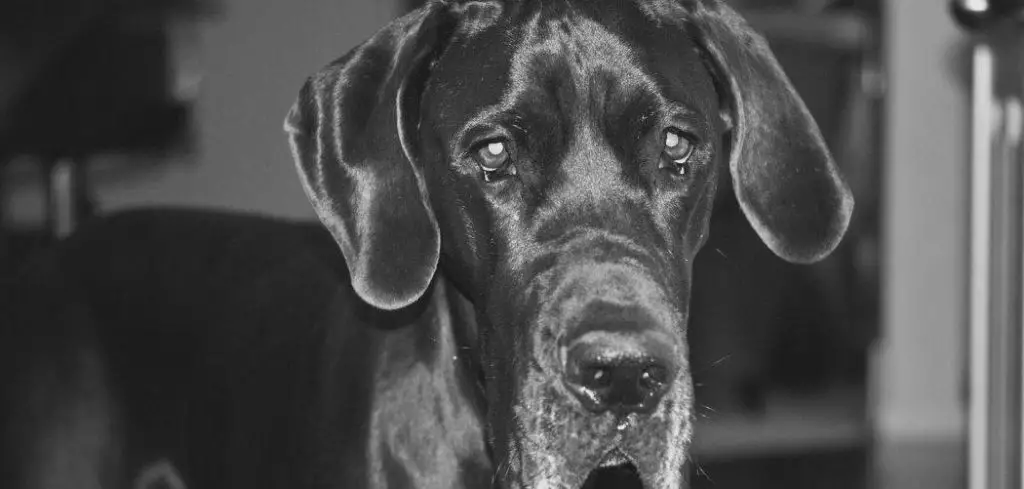If your dog is panting and pacing a lot, it’s easy to worry about what might be wrong.
We outline the common reasons why dogs may pant and pace a lot, what you can do at home, and when to seek veterinary help.
Dog Panting and Pacing a Lot — Why It Happens
Dog panting and pacing a lot usually point to restlessness, stress, or discomfort. Common causes include anxiety, pain, overheating, or side effects from medications like prednisone.
Dogs may pace when they can’t settle due to physical discomfort, confusion, or emotional distress, while panting helps them cope with internal stress or rising body temperature.
In some cases, hormonal issues such as Cushing’s disease or cognitive decline in older dogs can also trigger these behaviors.

Dog Panting and Pacing a Lot: Common Causes
Anxiety or Stress
Anxiety is one of the most common reasons dogs pant and pace excessively. Dogs may become anxious due to changes in their environment, separation from their owner, loud noises, or other stressors.
You might notice other signs such as whining, trembling, drooling, or attempting to hide.
Chronic stress can affect your dog’s overall health, making it important to identify triggers and provide comfort or professional behavioral support.
Read more: Dog Panting and Jerking (Here’s Why)
Pain or Discomfort
Pain often leads dogs to pant and pace as a way to self-soothe or release tension. This could result from joint issues, injuries, internal discomfort, or chronic conditions like arthritis.
Look for additional signs like limping, sensitivity when touched, restlessness, or reluctance to move. Untreated pain can worsen over time, so veterinary evaluation is crucial for proper management.
Heat or Overheating
Dogs pant and pace when they are trying to cool themselves after overheating. Panting increases evaporation to regulate body temperature, while pacing may be an instinctive response to discomfort from heat.
Signs of overheating can include drooling, lethargy, red gums, vomiting, or collapse in severe cases. Keeping your dog cool, hydrated, and avoiding prolonged exposure to heat is critical.
Gastrointestinal Upset
Upset stomach or digestive issues can make dogs restless, causing panting and pacing. Nausea, gas, or abdominal discomfort often leads dogs to walk repeatedly or change positions frequently.
Other indicators may include vomiting, diarrhea, or a bloated abdomen. Prompt veterinary care can help identify underlying causes such as infections, dietary intolerance, or more serious gastrointestinal conditions.
Heart or Respiratory Issues
Heart or lung problems may reduce oxygen delivery, leading to panting and pacing. Conditions like congestive heart failure, arrhythmias, or respiratory infections can make your dog feel uneasy and restless.
You may also notice coughing, rapid breathing, fainting, or pale gums. Early veterinary intervention is essential to prevent serious complications and provide appropriate treatment.
Neurological Disorders
Neurological conditions such as seizures, vestibular disease, or brain tumors can cause dogs to pace and pant excessively. These disorders can affect balance, awareness, and cause a sense of restlessness.
Other signs include head tilting, circling, unsteady gait, or unusual vocalizations. Prompt evaluation by a veterinarian or neurologist is critical for diagnosis and management.
What to Do If Your Dog Is Panting and Pacing a Lot
Observe your dog calmly without adding stress. Provide a quiet, comfortable environment and ensure they have access to fresh water.
Avoid scolding or forcing your dog to rest, as this can increase anxiety and pacing.
Try to identify possible triggers, such as environmental changes, pain, or heat, and take steps to alleviate them.
If pacing is linked to a medical condition or persistent discomfort, seek veterinary advice promptly.
Document any unusual behaviors, dietary changes, or physical symptoms to share with your veterinarian, which can help identify underlying causes quickly.
When to Call or Visit Your Vet
Seek immediate veterinary attention if your dog shows:
Panting that is continuous or accompanied by labored breathing
Persistent pacing with signs of distress or pain
Vomiting, diarrhea, or abdominal swelling
Lethargy, weakness, or collapse
Rapid heartbeat, pale gums, or fainting
Prompt evaluation can help identify serious health issues early and prevent complications.
Read more: Dog Panting and Just Sitting Up (Here’s why)
Key Takeaway
Panting and pacing a lot in dogs is a clear signal that something is affecting their comfort or health. Common causes include anxiety, pain, gastrointestinal upset, overheating, heart or respiratory problems, and neurological issues.
Observing your dog carefully, providing comfort, and seeking veterinary care when needed can ensure your dog stays healthy and safe.
